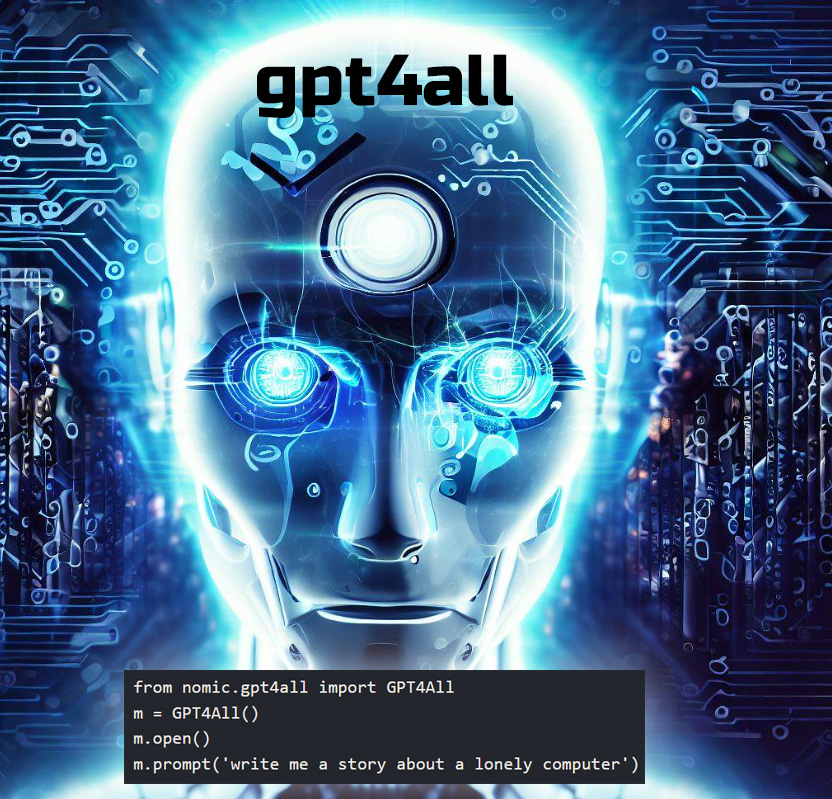The world of large language models is constantly evolving and bringing new developments to the forefront. One particularly interesting approach to improving these models is through fine-tuning, which involves further training a pre-existing language model using additional data. The “Stanford approach” to fine-tuning has been gaining popularity, as it has been shown to be effective in creating new and innovative language models.
One recent example of this approach is the development of gpt4all, which was trained on a staggering 437k examples using the LLaMA language model as its base. In contrast, a previous model, Alpaca, was only fine-tuned on around 54k examples from ChatGPT. By incorporating such a large amount of data, gpt4all is expected to perform at a higher level than previous models.
Using gpt4all is also relatively straightforward, as the project can be easily cloned from GitHub, and the model file can be downloaded and implemented with minimal difficulty.
Overall, gpt4all represents an exciting new development in the field of language models, and it will be interesting to see how it is utilized and refined in the future. Those who are interested in experimenting with the model can download it and share their experiences with others in the community.
All details: https://github.com/nomic-ai/gpt4all
The dialog is a conversation between Dave and Andre Mouliar, who created GPD for all, which is a large language model that can run on a MacBook Air locally without an internet connection. Dave downloaded the project and ran it on his computer, impressed by the entire AI agent on his computer without the internet. Andre shares the genesis of the project, stating that a high school student collected data from open AI before they fed the prompt generations into a pre-configured machine learning pipeline, which resulted in a chatbot model that people can chat with. The model gained popularity due to its ease of use and was released on GitHub. They also talk about AI in general and what has happened in the field recently.
The dialog discusses the development of large language models and their ability to learn to follow instructions through training on internet-sized datasets. The development of these models has led to the creation of chatbots that can be aligned to act in accordance with human moral values. The model, Chat GPT, is an example of a chatbot that has been designed to hesitate in answering certain prompts, such as those that are racist or offer financial advice. The discussion also briefly addresses security concerns, with the assurance that the model is sandboxed and does not access anything outside of the user’s computer. The dialog concludes with a comment on the costs of maintaining large language models and the accidental expenditure of $2,000 on the distribution of the model.
The dialog discusses the Alpaca model, which is trained on a smaller dataset and is not capable of holding multi-turn conversations like GPT-4. The Alpaca model can be used for one-turn instruction answering. The open-source community can use the released Alpaca model and build upon it by increasing the data, building a better model, and training the model on devices like Raspberry Pi or mobile phones. The Llama model, on which the Alpaca model is based, has a license that prevents commercializing any derivative works. Therefore, the team is working on removing this requirement and training a new GPTJ variant model that will be entirely open-source and free to use. The dialog also discusses the importance of high-quality, curated data in training large language models.
The conversation covers a range of topics related to AI and machine learning. The speakers discuss the importance of mind paintings in making AI systems work, as well as the challenges of scaling them up to handle large amounts of data. They speculate about Apple’s possible involvement in the development of AI systems and its ability to catch up to OpenAI, which has a large start thanks to its high-quality data and industry-leading talent. The conversation also touches on the ease of using the outputs of AI models to make new models and the potential for multi-modal systems that can reason across different types of data.
